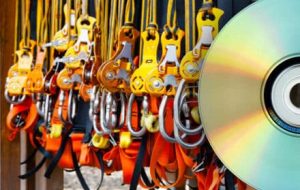Underground Construction, Caissons, Cofferdams, and Compressed Air
Home More Training Resources OSHA Construction Industry Training Requirements Underground Construction, Caissons, Cofferdams, and Compressed Air
OSHA Training Requirements - UNDERGROUND CONSTRUCTION, CAISSONS, COFFERDAMS, AND COMPRESSED AIR
This website is not the official or final authority to determine OSHA compliance responsibilities, which are set forth in OSHA standards themselves, and the Occupational Safety and Health Act of 1970. Because OSHA regulations are constantly being added, deleted, and/or revised, you must not rely on this website as the official or final authority of OSHA training requirements; refer to the official OSHA regulations available on OSHA’s website (osha.gov). – See disclaimers.
1926.800 – 1926.804 – Underground Construction, Caissons, Cofferdams, and Compressed Air
1926.800 – Underground Construction
(d) – Safety instruction. All employees shall be instructed in the recognition and avoidance of hazards associated with underground construction activities including, where appropriate, the following subjects:
(1) – Air monitoring:
(2) – Ventilation:
(3) – Illumination:
(4) – Communications:
(5) – Flood control:
(6) – Mechanical equipment:
(7) – Personal protective equipment:
(8) – Explosives:
(9) – Fire prevention and protection: and
(10) – Emergency procedures, including evacuation plans and check- in/check-out systems.
(e) – Notification.
(1) – Oncoming shifts shall be informed of any hazardous occurrences or conditions that have affected or might affect employee safety, including liberation of gas, equipment failures, earth or rock slides, cave-ins, floodings, fires or explosions.
(g) – Emergency provisions
(2) – Self-rescuers. The employer must provide self-rescuers approved by the National Institute for Occupational Safety and Health under 42 CFR part 84. The respirators must be immediately available to all employees at work stations in underground areas where employees might be trapped by smoke or gas. The selection, issuance, use, and care of respirators must be in accordance with 29 CFR 1926.103.
(5) – Rescue teams.
(iii) – Rescue team members shall be qualified in rescue procedures, the use and limitations of breathing apparatus, and the use of firefighting equipment. Qualifications shall be reviewed not less than annually.
(iv) – On jobsites where flammable or noxious gases are encountered or anticipated in hazardous quantities, rescue team members shall practice donning and using self-contained breathing apparatus monthly.
(v) – The employer shall ensure that rescue teams are familiar with conditions at the jobsite.
(i) – Gassy operations-additional requirements.
(5) – A fire watch as described in 1926.352(e) shall be maintained when hot work is performed.
(j) – Air quality and monitoring.
(1) – General
(i)(A) – The employer shall assign a competent person who shall perform all air monitoring required by this section.
(i)(B) – Where this paragraph requires monitoring of airborne contaminants “as often as necessary,” the competent person shall make a reasonable determination as to which substances to monitor and how frequently monitor, considering at least the following factors:
(1) – Location of jobsite: Proximity to fuel tanks, sewers, gas lines, old landfills, coal deposits, and swamps;
(2) – Geology: Geological studies of the jobsite, particularly involving the soil type and its permeability;
(3) – History: Presence of air contaminants in nearby jobsites, changes in levels of substances monitored on the prior shift; and
(4) – Work practices and jobsite conditions: The use of diesel engines, use of explosives, use of fuel gas, volume and flow of ventilation, visible atmospheric conditions, decompression of the atmosphere, welding, cutting and hot work, and employees’ physical reactions to working underground.
(v)(C) – Employees shall be informed when a concentration of 10 ppm hydrogen sulfide is exceeded.
(vi) – When the competent person determines, on the basis of air monitoring results or other information, that air contaminants may be present in sufficient quantity to be dangerous to life, the employer shall:
(A) – Prominently post a notice at all entrances to the underground jobsite to inform all entrants of the hazardous condition; and
(B) – Ensure that the necessary precautions are taken.
(o)(3) – Underground areas.
(i)(A) – A competent person shall inspect the roof, face, and walls of the work area at the start of each shift and as often as necessary to determine ground stability.
(i)(B) – Competent persons conducting such inspections shall be protected from loose ground by location, ground support or equivalent means.
(iv)(B) – A competent person shall determine whether rock bolts meet the necessary torque, and shall determine the testing frequency in light of the bolt system, ground conditions and the distance from vibration sources.
(o)(4) – Shafts
(iii) – After blasting operations in shafts, a competent person shall determine if the walls, ladders, timbers, blocking, or wedges have loosened. If so, necessary repairs shall be made before employees other than those assigned to make the repairs are allowed in or below the affected areas.
(q) – Drilling.
(1) – A competent person shall inspect all drilling and associated equipment prior to each use. Equipment defects affecting safety shall be corrected before the equipment is used.
(r) – Haulage.
(i) – A competent person shall inspect haulage equipment before each shift.
(t)- Hoisting unique to underground construction. Employers must comply with § 1926.1501(g) of § 1926 subpart DD. Except as modified by this paragraph (t), the following provisions of subpart N of this part apply: Requirements for material hoists are found in § § 1926.552(a) and (b) of this part. Requirements for personnel hoists are found in the personnel hoists requirements of § § 1926.552(a) and (c) of this part and in the elevator requirement of § § 1926.552(a) and (d) of this part.
(1) – General requirements for cranes and hoists.
(iv)(A) – Before maintenance, repairs, or other work is commenced in the shaft served by a cage, skip, or bucket, the operator and other employees in the area shall be informed and given suitable instructions.
(3) – Additional requirements for hoists.
(xix) – A competent person shall visually check all hoisting machinery, equipment, anchorages, and hoisting rope at the beginning of each shift and during hoist use, as necessary.
(xx) – Each safety device shall be checked by a competent person at least weekly during hoist use to ensure suitable operation and safe condition.
1926.803 – Compressed Air
(a) – General provisions.
(1) – There shall be present, at all times, at least one competent person designated by and representing the employer, who shall be familiar with this subpart in all respects, and responsible for full compliance with these and other applicable subparts.
(2) – Every employee shall be instructed in the rules and regulations which concern his safety or the safety of others.
(b) – Medical attendance, examination, and regulations.
(1) – There shall be retained one or more licensed physicians familiar with and experienced in the physical requirements and the medical aspects of compressed air work and the treatment of decompression illness. He shall be available at all times while work is in progress in order to provide medical supervision of employees employed in compressed air work. He shall himself be physically qualified and be willing to enter a pressurized environment.
(9) – A medical lock shall be established and maintained in immediate working order whenever air pressure in the working chamber is increased above the normal atmosphere.
(10) – The medical lock shall:
(xii) – Be in constant charge of an attendant under the direct control of the retained physician. The attendant shall be trained in the use of the lock and suitably instructed regarding steps to be taken in the treatment of employee exhibiting symptoms compatible with a diagnosis of decompression illness;
(e) – Compression.
(1) – Every employee going under air pressure for the first time shall be instructed on how to avoid excessive discomfort.
(f) – Decompression.
(2) – In the event it is necessary for an employee to be in compressed air more than once in a 24-hour period, the appointed physician shall be responsible for the establishment of methods and procedures of decompression applicable to repetitive exposures.
(3) – If decanting is necessary, the appointed physician shall establish procedures before any employee is permitted to be decompressed by decanting methods. The period of time that the employees spend at atmospheric pressure between the decompression following the shift and recompression shall not exceed 5 minutes.
(h) – Compressor plant and air supply.
(1) – At all times there shall be a thoroughly experienced, competent, and reliable person on duty at the air control valves as a gauge tender who shall regulate the pressure in the working areas. During tunneling operations, one gauge tender may regulate the pressure in not more than two headings: Provided that the gauge and controls are all in one location. In caisson work, there shall be a gauge tender for each caisson.

On Site OSHA Training Classes

Online OSHA Training Courses

